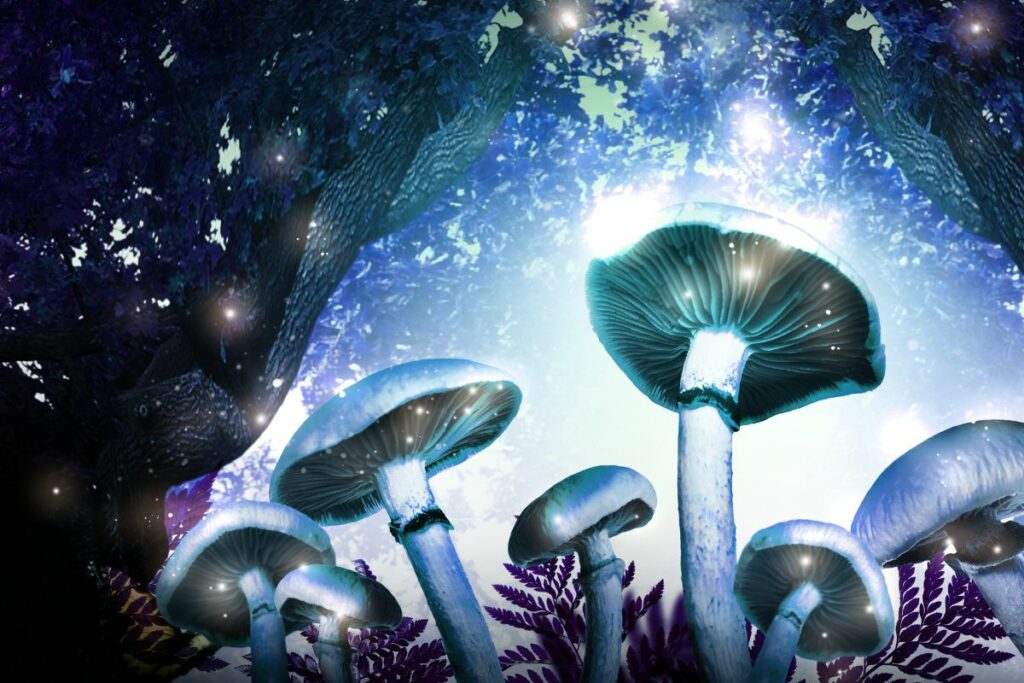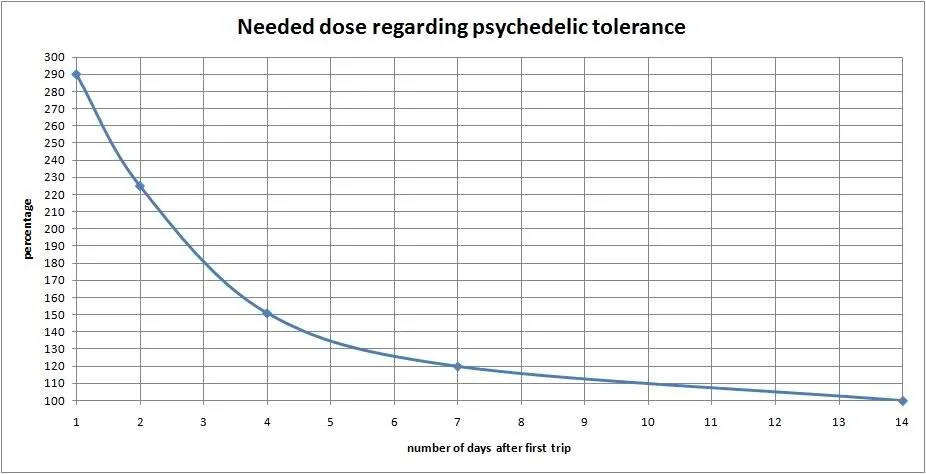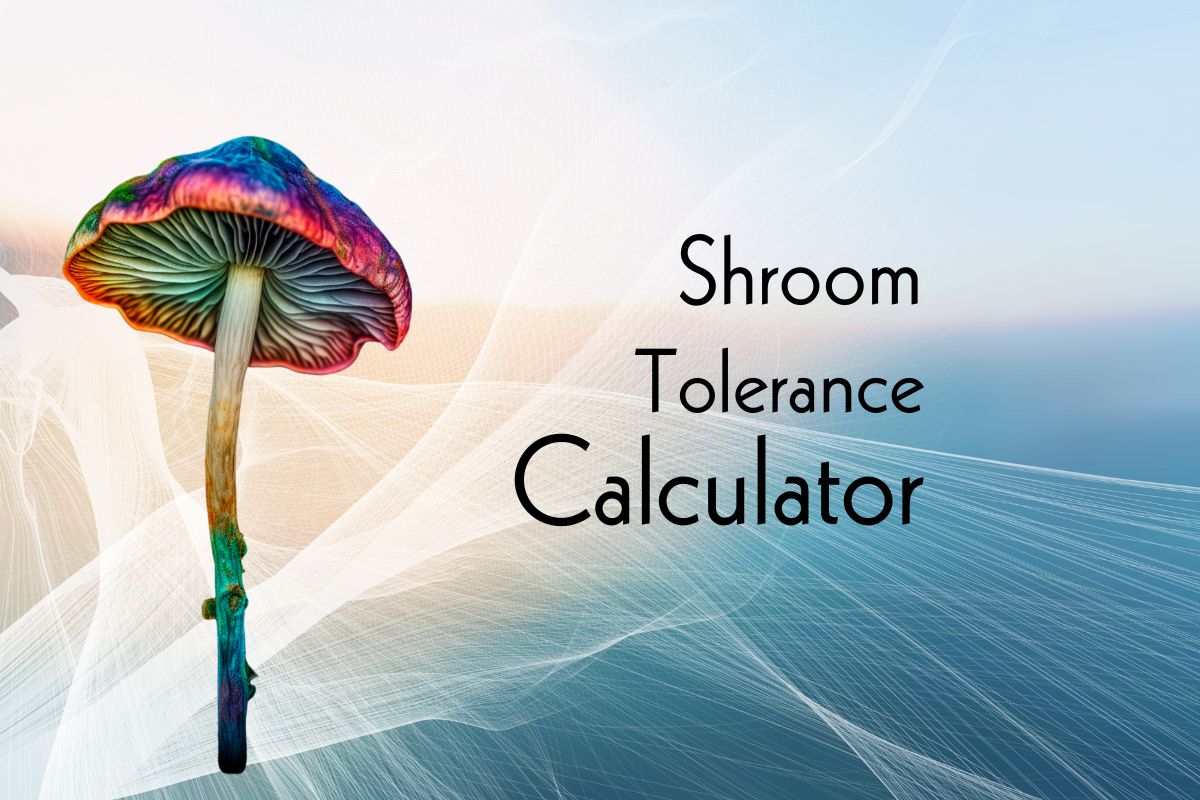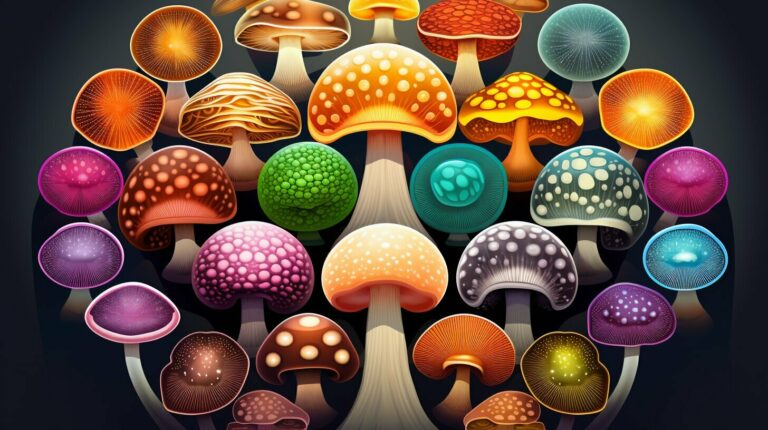A “shroom tolerance calculator” is a tool designed to estimate an individual’s tolerance to psilocybin mushrooms, commonly known as magic mushrooms or simply “shrooms”. These mushrooms contain the psychoactive compounds psilocybin and psilocin, which can induce mind-altering experiences when consumed. Understanding one’s tolerance to these substances is crucial in order to avoid potentially harmful effects or unwanted experiences, particularly when considering repeated use.
The concept of tolerance is closely related to the phenomenon of physiological adaptation and is tied to the body’s ability to metabolize and eliminate the psychoactive compounds present in magic mushrooms. Understanding the factors affecting tolerance is essential in order to ensure the safe and responsible use of these substances. A tolerance calculator aims to provide users with an estimate of their own personal tolerance, taking into account factors such as time elapsed since the last dose, strength of the magic mushrooms, and individual differences in metabolism.
While these calculators can offer a helpful starting point, it is essential to remember that each person’s response to psilocybin mushrooms is unique, and a number of variables can account for differences in individual experiences. Individuals should approach the use of a shroom tolerance calculator with caution and always prioritize their safety and well-being when considering the consumption of these powerful and often unpredictable substances.
Understanding Shrooms
Table of Contents

Magic mushrooms, also known as shrooms or Psilocybe, are a type of fungi containing the psychoactive compounds psilocybin and psilocin. These compounds are responsible for the hallucinogenic effects experienced by users. One of the most well-known species of magic mushrooms is Psilocybe cubensis, which is commonly grown and consumed for its psychedelic properties.
Shroom tolerance is an important factor to consider when using these psychedelic fungi. Tolerance refers to the decreased sensitivity to the effects of a substance over time, leading to a need for higher doses to achieve the same effects. Magic mushroom tolerance can develop rapidly, often within a few days of consecutive use. Therefore, understanding shroom tolerance and how to calculate it can help ensure responsible and safe consumption.
A shroom tolerance calculator can be a useful tool for determining the ideal time between doses, minimizing the risk of developing a tolerance or experiencing adverse effects. Several factors contribute to shroom tolerance, such as dosage, frequency of use, and individual metabolic differences. By taking these factors into account, a shroom tolerance calculator can provide personalized guidance on spacing out doses and reducing the potential for negative effects.
In summary, magic mushrooms are a unique and powerful substance with potential for both therapeutic and recreational use. Understanding shroom tolerance, including the use of a shroom tolerance calculator, is essential for responsible consumption and maximizing the benefits of this natural psychedelic.
Components of Shrooms
Psilocybin and Psilocin
Shrooms, commonly known as magic mushrooms, are a group of fungi that contain psychoactive compounds such as psilocybin and psilocin. These compounds are responsible for the psychedelic effects experienced by users who consume shrooms. Both psilocybin and psilocin are members of the tryptamine family, which are naturally occurring alkaloids with structural similarities to the neurotransmitter serotonin.
Psilocybin is a prodrug, meaning it is converted into its active form, psilocin, once ingested. This conversion occurs through a process called dephosphorylation, where a phosphate group is removed from the psilocybin molecule. Once converted, psilocin interacts with the serotonin receptors in the brain, inducing the characteristic hallucinatory experiences.
The psilocybin content and psilocin content vary among different species of magic mushrooms, as well as within individual mushrooms of the same species. These variations can be influenced by factors such as the growth environment, the stage of development, and the part of the mushroom being analyzed. It is essential to be aware of these variations when using a shroom tolerance calculator, as accurate measurement of the psychoactive content can help determine the appropriate dosage for a user, thus mitigating the risk of negative side effects.
In summary, the key components of shrooms are the psychoactive compounds psilocybin and psilocin, which are converted within the body to induce the hallucinatory effects associated with magic mushroom consumption. Understanding the composition of shrooms, including the variations in psilocybin and psilocin content, is crucial for calculating appropriate dosages and ensuring a safer, more enjoyable experience.
Tolerance to Shrooms
Psychedelic mushrooms, commonly known as shrooms, contain the psychoactive compound psilocybin. When consumed, shrooms can lead to altered perceptions, hallucinations, and even changes in thought processes. However, the effects and intensity of these experiences can differ depending on a person’s tolerance level.
Tolerance levels to shrooms are influenced by several factors, including frequency of use, dosage, and individual physiology. Those who frequently use shrooms may notice the effects becoming less powerful and more predictable over time due to the body’s naturally occurring adaptation to the substance. This phenomenon is known as tolerance.
To ensure a safe and enjoyable experience, understanding one’s shroom tolerance is essential. When taking into consideration a person’s tolerance level, the first factor to acknowledge is the frequency of use. Shroom tolerance can develop rapidly, even after just a single use. Regular users may require higher doses to achieve the desired effects compared to someone new to shrooms. However, taking progressively larger doses is not recommended since it can increase the risk of negative side effects and the potential for dependence.
Studies have shown that tolerance to shrooms typically decreases after about a week of abstinence, meaning users can expect their tolerance levels to return to baseline after this period. It is important for individuals to exercise caution and avoid increasing their dosage too rapidly, as this can lead to dangerous consequences.
Individual genes and metabolism can also impact a person’s tolerance to shrooms. While some people may be more sensitive to the effects of psilocybin, others may have a naturally higher tolerance. This emphasizes the importance of starting with a low dose and adjusting it slowly and accordingly based on individual experiences and perceptions.
In conclusion, understanding one’s tolerance to shrooms is vital for ensuring a safe and enjoyable experience. Factors such as frequency of use and individual physiology must be taken into account before deciding on the appropriate dosage. By being mindful of tolerance levels and altering use accordingly, individuals can minimize risks and maximize the benefits associated with shroom use.
Shroom Dosage
When considering the use of magic mushrooms, it’s crucial to understand the proper dosage to achieve the desired effects. This section will cover the differences between dry and fresh shrooms, as well as microdosing.
Dry Versus Fresh Shrooms
The potency of magic mushrooms can vary depending on whether they are fresh or dried. When determining a suitable dose, it’s important to consider the weight of the mushrooms in question. A general guideline is that fresh mushrooms contain about 90% water, so their potency is significantly lower than that of dried mushrooms.
For example, 3.5 grams of dried shrooms are often considered the standard dose for a moderate trip. However, if the mushrooms are fresh, it would be necessary to scale up the dosage to account for their reduced potency. In this case, you would need approximately 35 grams of fresh mushrooms to achieve a similar effect.
Dry Shrooms:
- Typical dose for a moderate trip: 3.5 grams
Fresh Shrooms:
- Typical dose for a moderate trip: 35 grams
Microdosing Shrooms
Microdosing refers to the practice of taking small, sub-perceptual doses of psychedelics in order to experience subtle benefits without causing a full trip. Microdosing magic mushrooms has gained popularity for its potential benefits on mental health, creativity, and overall well-being.
To microdose shrooms, you’ll need to consume a much smaller amount than you would for a regular trip. The recommended microdose range for dried mushrooms is generally between 0.1 and 0.3 grams, while for fresh mushrooms, it would be 1 to 3 grams. As individual tolerances and desired effects may vary, it’s best to start with a lower dose and adjust accordingly.
Dried Shrooms Microdose:
- 0.1 – 0.3 grams
Fresh Shrooms Microdose:
- 1 – 3 grams
It’s worth noting that higher doses of magic mushrooms can elicit more profound experiences, but they should be approached with caution and respect for the substance. It’s always best to start with a lower dose and gradually increase as needed, depending on your personal tolerance and desired effects.
Using the Tolerance Calculator
The shroom tolerance calculator is a useful tool for individuals seeking to estimate their tolerance levels to psilocybin mushrooms, commonly known as shrooms. By utilizing this calculator, users can input relevant personal information to receive a tailored recommendation for their next shroom experience.
To use the tolerance calculator, individuals will typically be required to input essential parameters, such as their most recent dosage, the time elapsed since their last shroom experience, and any known sensitivities. As a result, the calculator will generate an estimation of the user’s current tolerance level, which can be valuable when determining an appropriate dosage for future experiences.
The shroom tolerance calculator operates on a straightforward mathematical model, taking into account the known relationship between dosage, time, and tolerance levels. It assesses the decrease in potency over a specific duration, thus providing a more accurate estimate for the user. However, it is crucial to understand that the results generated from this calculator should only be taken as a rough guideline. Personal tolerance levels can vary significantly, considering individual differences in factors such as metabolism, weight, and frequency of use.
Often, tolerance calculators can be found in the form of online tools or downloadable spreadsheet templates. Users can opt for the method that suits them best, but the key is ensuring the chosen calculator offers accurate estimations and considers the crucial parameters mentioned earlier.
In conclusion, the shroom tolerance calculator serves as a valuable resource for those looking to maximize their shroom experiences while minimizing potential adverse effects. By providing a personalized estimate for current tolerance levels, users can make more informed decisions when determining the appropriate dosages for their next journey. However, it is important to remember that the calculator’s results should not be considered absolute, and individuals should always prioritize safety and personal well-being when engaging in any substance use.

Link Between Shrooms and Other Psychedelics

When discussing the effects of psychedelic substances, it is essential to understand the relationship between magic mushrooms, commonly referred to as “shrooms”, and other well-known psychedelics such as LSD. Both shrooms and LSD are classified as hallucinogens, which are substances that alter perception and mood by creating sensory and psychological distortions.
The active ingredient in shrooms, psilocybin, is a naturally occurring compound found in over 200 species of mushrooms. When ingested, psilocybin converts into psilocin, which then exerts its psychedelic effects. On the other hand, LSD (Lysergic acid diethylamide) is a semi-synthetic compound derived from a natural fungus known as ergot. Like psilocybin, LSD modifies serotonin receptors in the brain, inducing altered states of consciousness and changes in thought patterns.
Although both shrooms and LSD fall into the category of psychedelic substances, their effects and durations can differ significantly. Shrooms typically produce a shorter, more introspective experience, often inducing feelings of connection to nature and profound spiritual insights. The effects usually last around 4 to 6 hours. In comparison, LSD produces a longer-lasting effect, lasting anywhere from 8 to 12 hours and may cause highly intricate visualizations and complex thought processes.
Interestingly, cross-tolerance between psilocybin and other psychedelics, such as LSD, has been observed in some studies. The term “cross-tolerance” refers to the phenomenon when prior exposure to one substance reduces the responsiveness to another related substance. In this case, using shrooms can possibly lead to a decreased effect of LSD in a short period and vice versa.
Despite the differences, both shrooms and LSD have been observed to have therapeutic potential in treating mental health disorders such as depression, anxiety, and PTSD like the Galaxy Treats Moon Shrooms Amanita Gummies. Research examining the potential benefits and risks of these substances is ongoing, and understanding their relationship and interactions can aid in developing a more comprehensive grasp of their therapeutic applications.
In conclusion, while shrooms and LSD share similarities such as their hallucinogenic properties and potential therapeutic applications, their effects, durations, and mechanisms of action differ. Understanding these differences is crucial for those considering the usage of these substances and for researchers aiming to uncover further insights into their potential benefits and risks.
Effects of Shrooms
Short-Term Effects
Shrooms, or psilocybin mushrooms, induce a range of short-term effects on users. Psilocybin, the active compound in these mushrooms, interacts with the brain’s serotonin receptors, altering the user’s perception and emotions. The intensity and duration of a trip depend on factors like individual tolerance, dosage, and strain of mushroom consumed.
Some common short-term effects include:
- Altered perception of time and space
- Visual and auditory hallucinations
- Euphoria and increased introspection
- Increased heart rate and blood pressure
- Anxiety, fear, or panic in certain cases
- Nausea or gastrointestinal discomfort
It is essential to consider one’s environment, emotional state, and dosage before consuming shrooms to minimize negative experiences and maximize the potential for a positive and insightful trip.
Long-Term Effects
While the short-term effects of shrooms typically subside within a few hours, it is crucial to be aware of the potential long-term effects. Most users do not report any lasting detrimental effects, though individual experiences may vary.
Possible long-term effects of shroom usage include:
- Lasting changes in brain function: Some studies suggest that psilocybin has the potential to alter the brain’s structure, resulting in long-lasting changes in personality and thought patterns.
- Persistent hallucinogen perception disorder (HPPD): This rare condition involves experiencing persistent and unwanted visual hallucinations reminiscent of a previous trip.
- Psychological effects: Individuals prone to mental health disorders such as schizophrenia or severe anxiety may experience exacerbation of their symptoms after consuming psilocybin mushrooms.
It is worth noting that long-term effects typically occur in individuals with predispositions to specific conditions or who engage in excessive and prolonged shroom usage. The potential for lasting effects underscores the importance of using shrooms responsibly and in moderation.
Influence of MAO Inhibitors on Shroom Tolerance
MAO inhibitors, or monoamine oxidase inhibitors, are known to affect the tolerance and overall experience of consuming psychoactive mushrooms. These inhibitors work by limiting the breakdown of monoamine neurotransmitters in the body, such as dopamine, serotonin, and norepinephrine, thereby potentially increasing the effects of hallucinogenic substances, like psilocybin-containing mushrooms.
When using an MAO inhibitor in conjunction with psilocybin mushrooms, it’s important to note that the combination can significantly intensify the overall effects. As a result, this may alter an individual’s tolerance to mushrooms and require adjustments in dosage. The increased potency may also lead to more pronounced and enduring after-effects.
It’s crucial to pay attention to the timeframe when combining MAO inhibitors with shroom consumption. Research suggests that it may take up to 2 weeks for the body to return to its original level of monoamine oxidase activity following the use of a non-selective irreversible MAO inhibitor. Consequently, users should consider waiting at least 14 days after their last MAO inhibitor intake before engaging in mushroom consumption to minimize the risk of unexpected interactions and adverse effects.
In conclusion, the use of MAO inhibitors can have a considerable impact on an individual’s shroom tolerance and overall experience. When calculating one’s shroom tolerance, keep in mind the possible interactions, and allow for an appropriate time lapse between the use of MAO inhibitors and the intake of psilocybin mushrooms.
Responsible Use of Shroom

When using shroom, or psychedelic mushrooms, it’s essential to practice responsible use to ensure a safe and beneficial experience. This includes understanding dosage, tolerance, and other factors. One tool that can help users follow best practices is the use of a shroom tolerance calculator.
A shroom tolerance calculator is an online tool that estimates the amount of time needed between shroom trips to minimize tolerance buildup. Tolerance can reduce the effectiveness of shrooms and potentially lead to negative experiences. This calculator accounts for factors such as previous dose and time since the last trip, ensuring accurate results tailored to individual situations.
Proper dosage is another key aspect of responsible shroom use. Overdosing can lead to uncomfortable or even dangerous side effects. Users should start with a low dose, typically around 1 to 2 grams, and gradually increase the dosage on subsequent trips. This approach allows users to gauge their body’s reaction to shrooms and adjust accordingly.
Incorporating a solid guide for responsible usage can ensure that users are prepared, aware of potential risks, and equipped with knowledge to handle any challenges that may arise. A good guide covers topics such as set and setting, preparing for the trip, and integrating the experience afterward.
Set and setting pertain to one’s mindset and environment during a shroom trip. Ensuring a positive mental state and a safe, comfortable environment helps maximize the potential for a beneficial experience. It’s also essential to have a trip sitter—a sober, trusted individual who can provide support and guidance throughout the trip.
Following these guidelines and making use of resources such as a shroom tolerance calculator promote responsible shroom use. By taking these precautions, users can maximize the benefits and minimize the risks associated with psychedelic experiences.
Frequently Asked Questions
What factors affect psilocybin tolerance?
Several factors can affect psilocybin tolerance, including individual metabolism, frequency of use, and the potency of the mushrooms consumed. Tolerance can build rapidly with repeated use, leading to a reduced effect from the same dose. Additionally, sensitivity to psilocybin may vary by individual, with some people experiencing stronger effects than others.
How long should I wait between shroom trips?
Generally, it is advised to wait at least two weeks between shroom trips to allow your tolerance to reset and to minimize the risk of negative effects from frequent use. This waiting period allows your body and mind to recuperate from the experience and to avoid the development of a high tolerance.
Are there ways to reduce shroom tolerance?
Shroom tolerance can be reduced by taking breaks between trips, allowing your body to metabolize and eliminate the psilocybin from your system. Additionally, maintaining a healthy lifestyle with proper nutrition, exercise, and sleep can help your body effectively process and metabolize the substance.
Does shroom tolerance differ from person to person?
Yes, shroom tolerance can vary from person to person due to factors such as individual metabolism, genetic predisposition, and prior experiences with psychedelics. Some people may develop a tolerance more quickly than others and require longer breaks between shroom trips to maintain the desired effects.
Do different strains of shrooms have different tolerance levels?
Different strains of mushrooms can contain varying amounts of psilocybin, which may influence tolerance levels. Potent strains may lead to a quicker build-up of tolerance, whereas less potent strains may require higher doses to achieve the same effects. It’s important to research and be aware of the potency of the strain you are using.
Is there a reliable resource for calculating shroom tolerance?
There isn’t a definitive resource for calculating shroom tolerance, as individual experiences can vary greatly. However, anecdotal reports and some online tools can provide rough estimates based on dosage, frequency of use, and individual factors. Always exercise caution and listen to your body when considering dosages and frequency of use.







